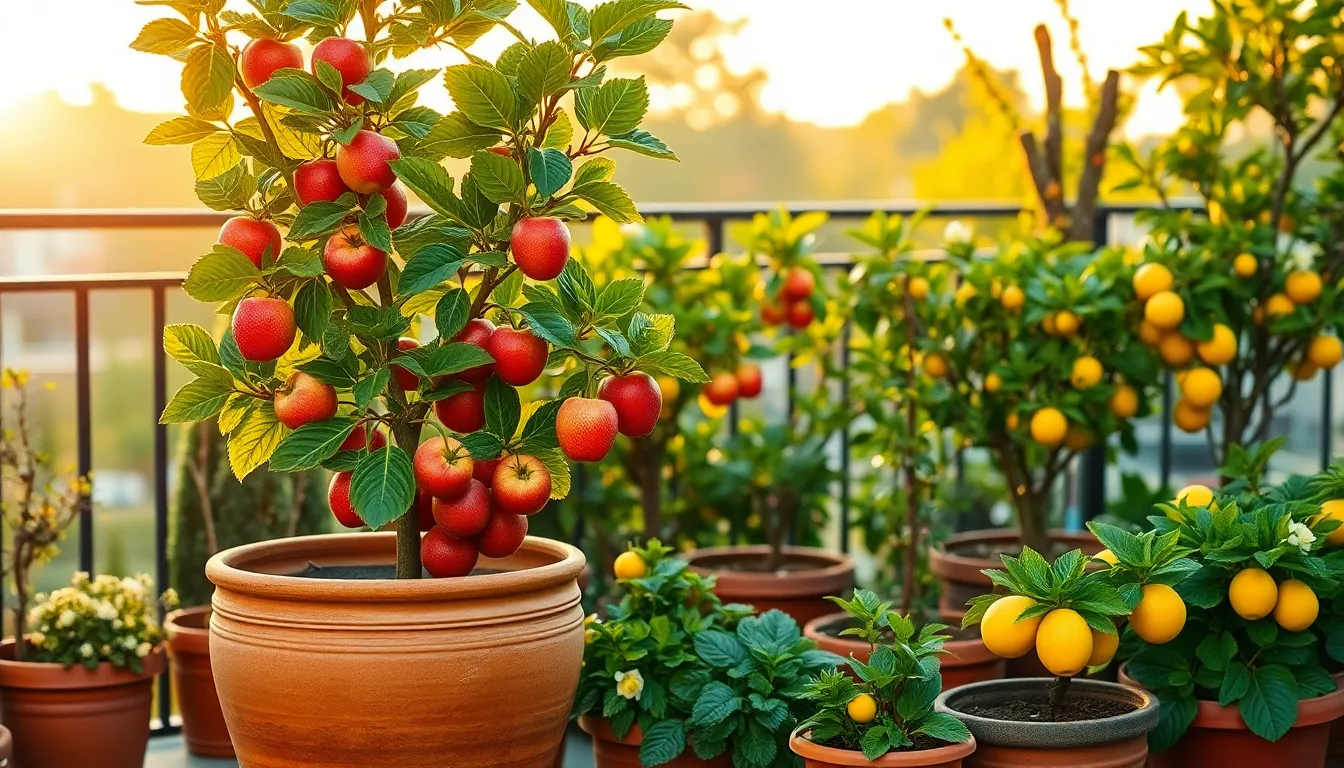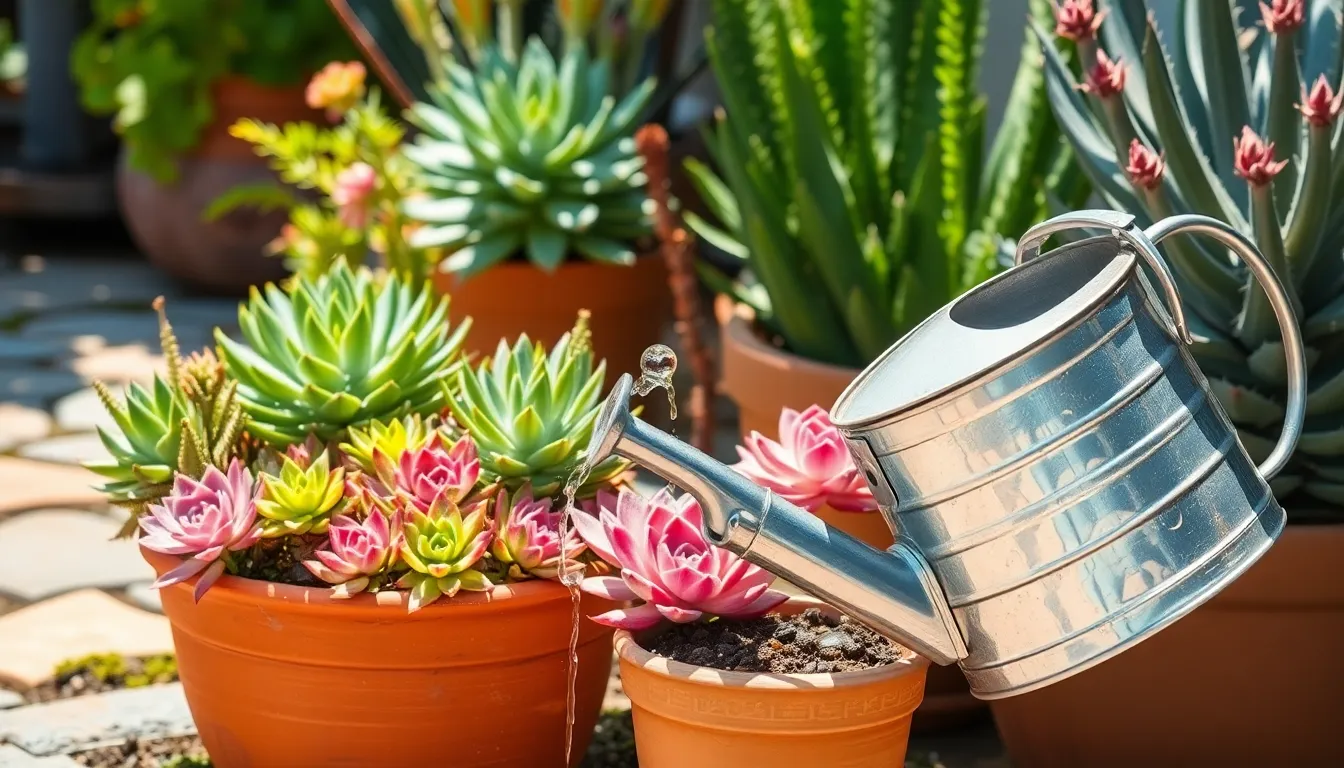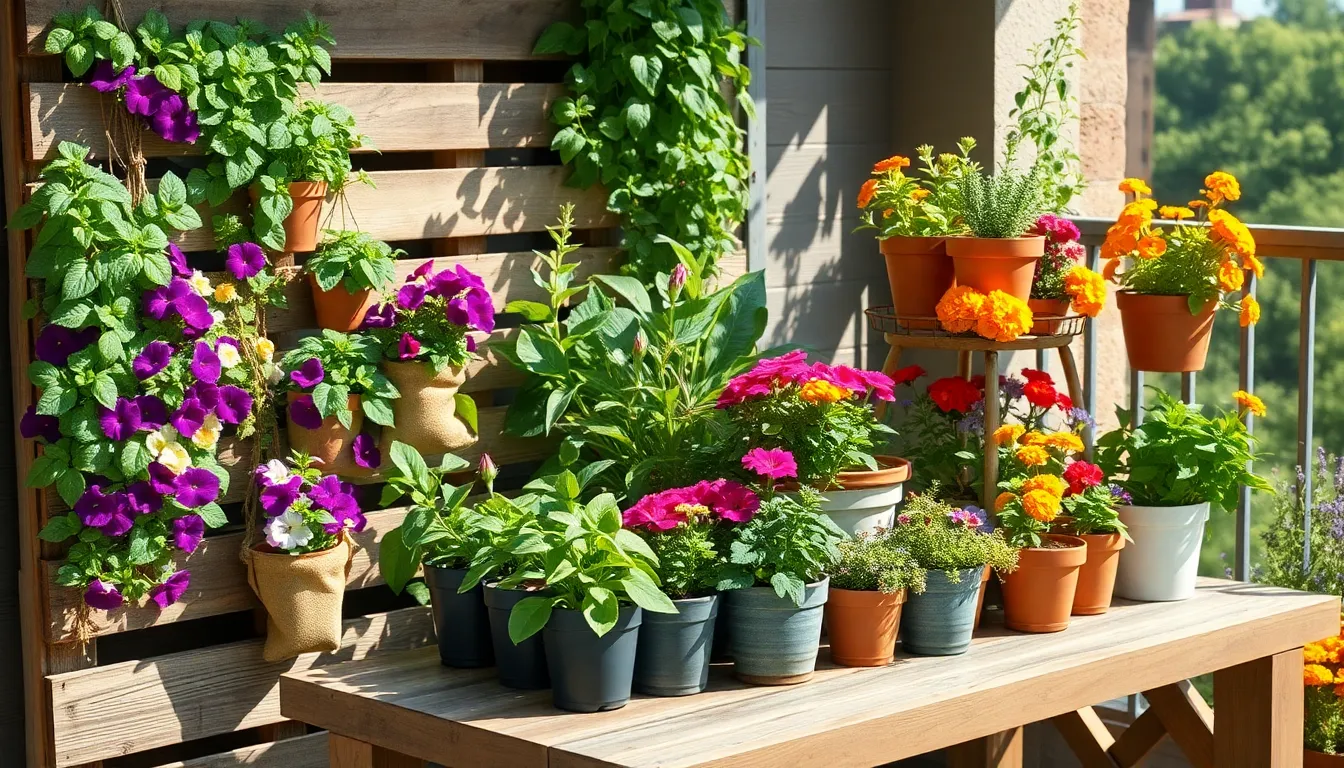Imagine plucking a juicy apple, a sun-ripened peach, or a plump pear right from your own backyard, even if that backyard is no bigger than a postage stamp. The dream of growing your own fruit isn’t reserved for those with sprawling gardens; with a bit of creativity and the right approach, even the coziest of spaces can transform into a bountiful orchard. Whether you’re just getting your hands dirty for the first time or you’re a seasoned gardener looking to maximize your yield, growing fruit trees in small spaces is a rewarding pursuit that promises both beauty and delicious returns.
The importance of this gardening endeavor extends beyond mere aesthetics or the delight of homegrown produce. As urban living and limited outdoor spaces become more common, learning to cultivate fruit trees in compact areas not only enhances your home environment but also contributes to a more sustainable lifestyle. In this guide, we’ll delve into the ingenious techniques and clever strategies that make it possible to grow a variety of fruit trees, even when space is at a premium. From selecting the right dwarf or columnar varieties to mastering container gardening and espalier techniques, you’ll find everything you need to start your own mini orchard.
Get ready to explore the practical steps and expert tips that will empower you to cultivate everything from citrus to cherries, regardless of how little room you have to spare. You’ll discover how to nurture your trees through careful pruning and optimal placement, ensuring they thrive and produce abundant harvests year after year. So, whether you’re cultivating a single balcony planter or transforming a small patio into a lush fruit haven, this article will equip you with the knowledge and confidence to succeed. Let’s embark on this fruitful journey together and watch as your small space flourishes with the joys of homegrown fruit.
Select Compact Fruit Tree Varieties
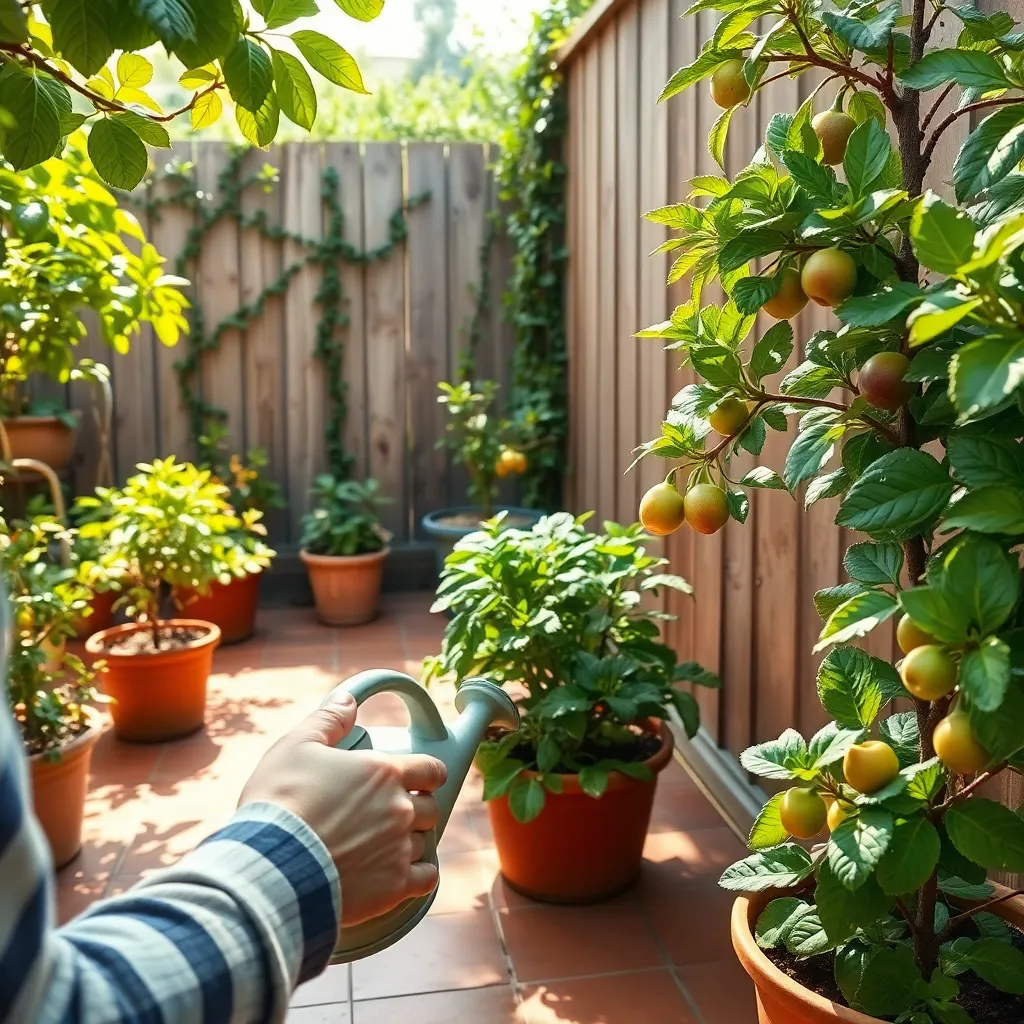
Choosing the right compact fruit tree varieties can make all the difference in a small garden. Consider trees that are naturally smaller or have been specifically bred for compact growth, such as dwarf apple, cherry, and peach trees.
It’s important to select varieties that are compatible with your climate and soil conditions. Dwarf apple trees such as ‘Fuji’ or ‘Granny Smith’ thrive in well-draining soil and require full sun for optimal fruit production.
In small spaces, container planting is an excellent option, and many compact varieties adapt well to pots. Ensure that containers have adequate drainage holes and are filled with a high-quality potting mix to support healthy root growth.
Regular pruning is crucial for compact fruit trees to maintain their size and encourage fruiting. Prune in late winter or early spring when the tree is dormant, focusing on removing dead or crossing branches to improve air circulation.
For those seeking a unique addition, consider the ‘Ballerina’ apple trees, which grow in a columnar shape, perfect for tight spaces. These trees require minimal pruning and can be planted as close as two feet apart, making them ideal for balcony or patio gardens.
Utilize Vertical Growing Techniques
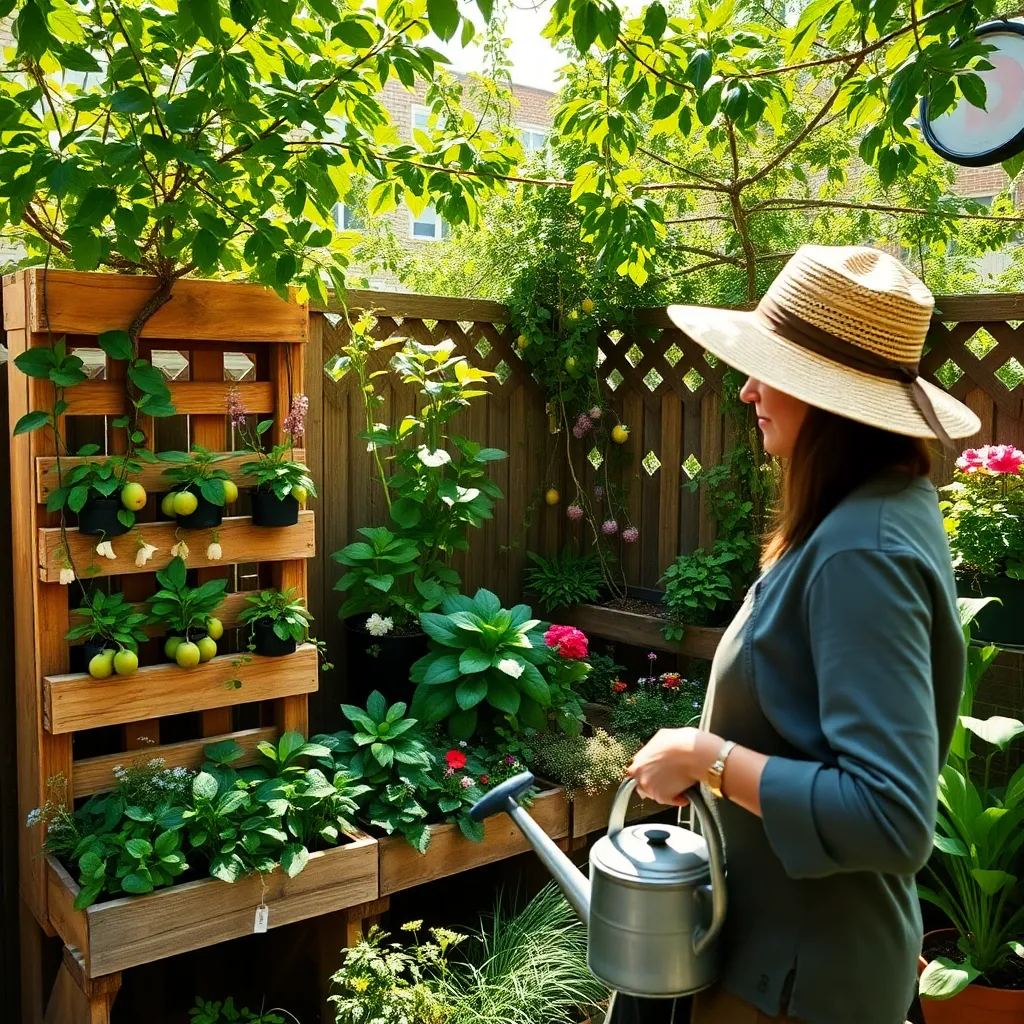
To maximize space when growing fruit trees in small areas, consider utilizing vertical growing techniques. This method not only saves space but also enhances sunlight exposure, which is crucial for fruit production.
Begin by selecting the right type of support, such as trellises, arbors, or fences, which can help maintain the tree’s structure. Secure your trees with soft ties to prevent damage to the branches as they grow vertically.
Choose fruit tree varieties that are naturally inclined to grow upwards, like columnar apple trees or espaliered pears. These trees have been specially bred or trained to grow in a vertical manner, making them ideal for tight spaces.
Regular pruning is essential to encourage upward growth and maintain the health of vertical fruit trees. Prune in late winter or early spring to remove any dead or overcrowded branches, ensuring better air circulation and light penetration.
When planting vertically, it’s important to pay attention to the soil type used. Opt for a well-draining soil mix, and consider adding organic matter like compost to improve nutrient availability and moisture retention.
Watering practices should be adjusted to suit vertical gardens, as plants may dry out faster. Ensure a consistent watering schedule, especially during dry spells, and consider installing a drip irrigation system for efficient moisture delivery.
Prepare Well-Draining Container Soil
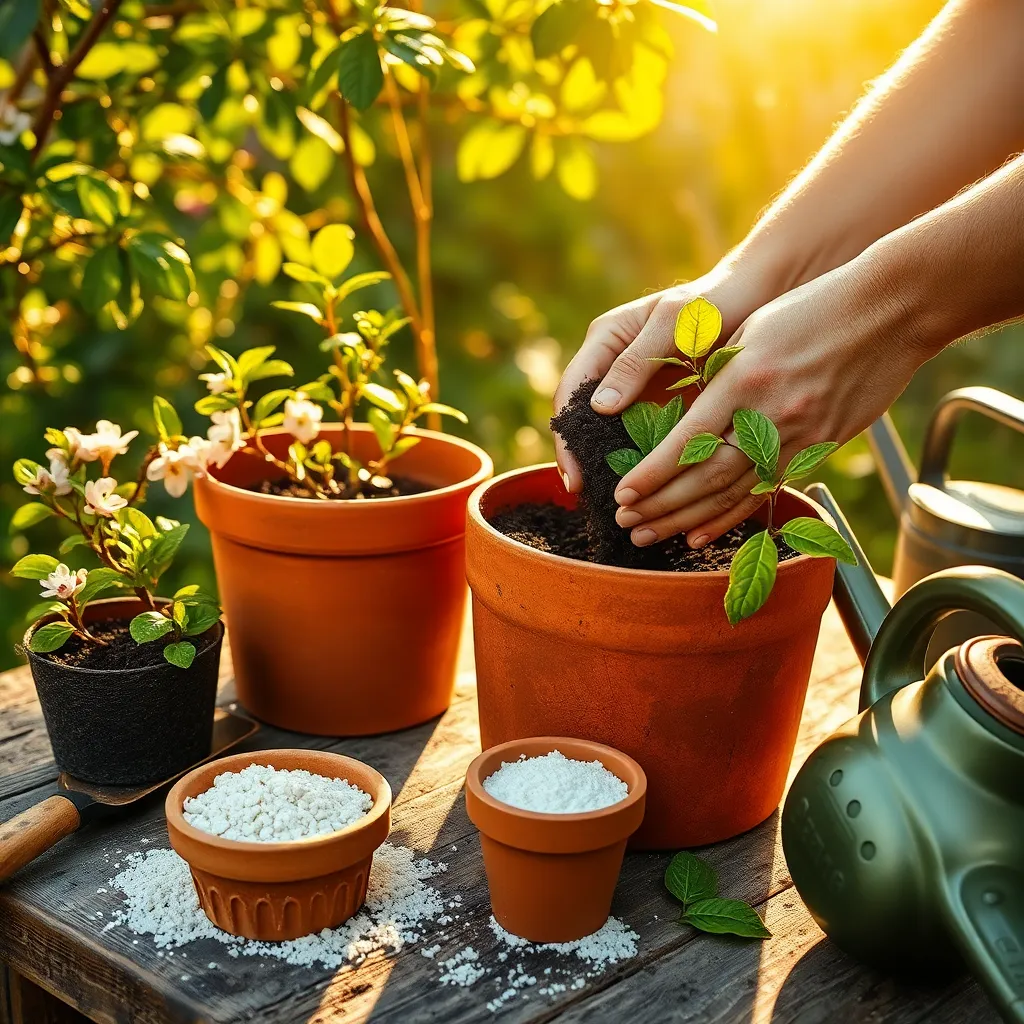
Creating well-draining container soil is crucial for the health of your fruit trees, especially in small spaces. Begin by selecting a high-quality potting mix that provides a balance of nutrients and drainage capabilities.
To improve drainage, incorporate materials like perlite or coarse sand into your potting mix. These amendments help prevent waterlogging, ensuring your tree roots receive the right amount of moisture without being overwhelmed.
Consider adding a layer of gravel or small stones at the bottom of your container to further enhance drainage. This technique creates a reservoir that allows excess water to escape, protecting your fruit tree from root rot.
For those looking to take their soil preparation to the next level, mix in some slow-release fertilizer to provide a steady supply of nutrients. This ensures your fruit trees have the essential elements they need to thrive throughout the growing season.
Prune Regularly for Size Control
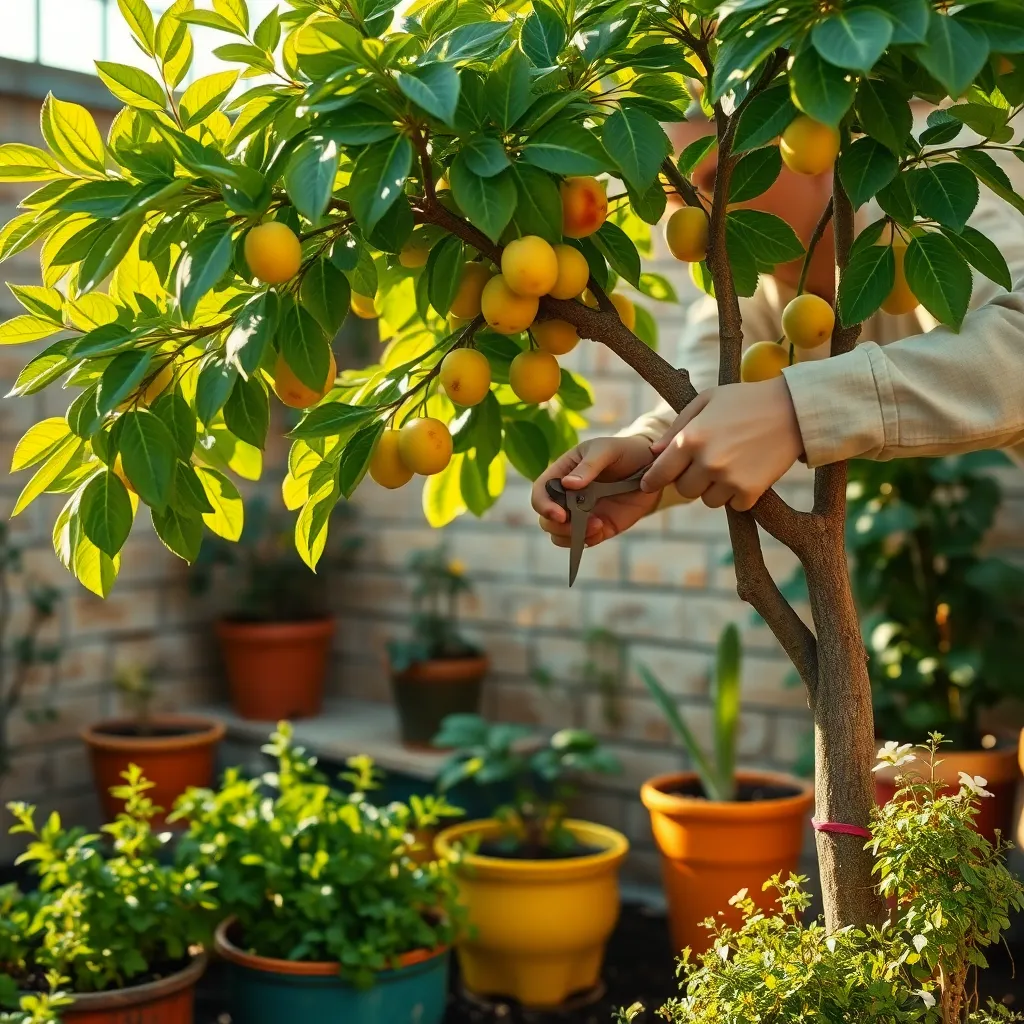
Pruning is essential for maintaining the desired size of your fruit trees, especially in small spaces. By regularly trimming back branches, you can keep your tree manageable and healthy.
Start by removing any dead or diseased branches, which helps the tree focus energy on new growth. Use clean, sharp pruning shears to make precise cuts just above a bud or branch junction, ensuring a clean heal.
Incorporate thinning cuts to remove crowded branches, allowing more light and air to penetrate the canopy. This not only keeps the tree smaller but also boosts fruit production by encouraging better growth conditions.
For advanced gardeners, consider the specific pruning techniques like espalier or cordon training, which are ideal for tight spaces. These methods involve training branches along a framework, creating a decorative and space-efficient structure.
Fertilize and Water Consistently
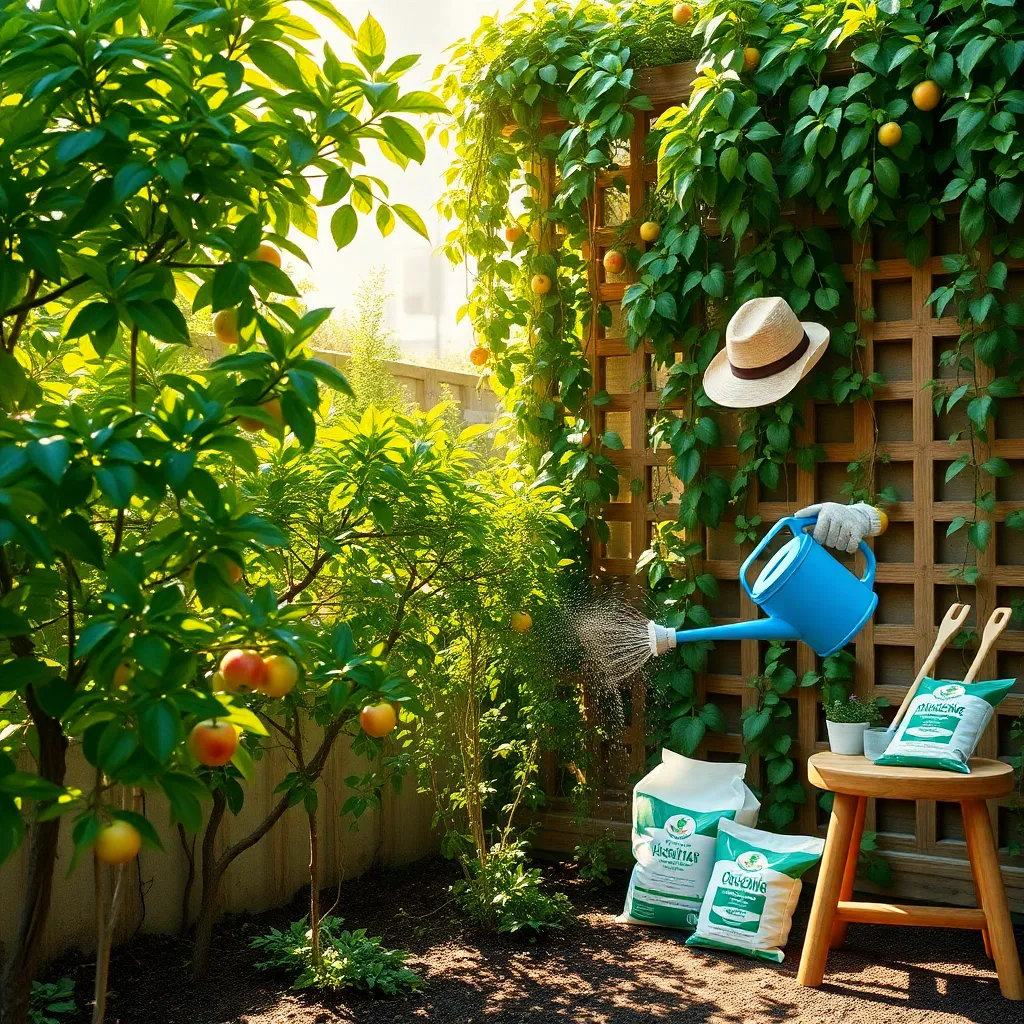
Consistent fertilizing and watering are crucial for optimizing the growth of fruit trees in small spaces. Fruit trees in containers often need more frequent care due to limited soil and nutrients compared to those planted in the ground.
Begin with selecting a well-balanced, slow-release fertilizer designed for fruit trees. Apply it according to the package instructions, usually every 4 to 6 weeks during the growing season, to ensure your trees receive a steady supply of nutrients.
Watering is equally important, especially in small spaces where soil dries out quickly. Check the soil moisture regularly by inserting your finger about an inch deep; if it feels dry, it’s time to water.
For those looking to refine their watering technique, consider installing a drip irrigation system. This method delivers water directly to the root zone, conserving water and ensuring even distribution, which is especially beneficial for container-grown trees.
Conclusion: Growing Success with These Plants
In “How to Grow Fruit Trees in Small Spaces,” we explored five key relationship concepts: understanding the importance of space management, cultivating patience and persistence, nurturing through consistent care, embracing adaptability, and celebrating growth milestones. These principles, though rooted in gardening, mirror the nurturing required to cultivate fulfilling relationships even when faced with limitations.
To put these insights into action, start by identifying one small space in your life—be it time, emotional bandwidth, or a physical environment—that could benefit from enhanced nurturing. Begin today by dedicating just 10 minutes to focus on this area, whether through a thoughtful conversation, a shared activity, or personal reflection.
Remember, the seeds of strong relationships are planted in small, deliberate actions. Bookmark this article for future reference, ensuring you have a ready resource to guide you through the seasons of growth and change in your relationships. As you apply these principles, envision a future where your relationships flourish with the same vibrancy and resilience as a well-tended orchard. Together, let’s cultivate connections that are not only fruitful but also enduring.

